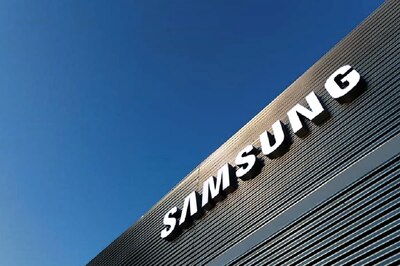
views
The iPhone 11 Pro and the iPhone 11 Pro Max are the first time when the “Pro” moniker has been adopted by the iPhones. And these take over the mantle from the iPhone XS and the iPhone XS Max from last year. No big design change this year, except perhaps the new Midnight Green and the redone Gold colour options, as perhaps one could argue for a justification for the Pro badge of honour. But that doesn’t mean we don’t have any changes on that front. Perhaps the new matte finish might have more fans over time. Just to be perfectly honest, I did find the build quality a tad better than the iPhone XS and the matte glass is the real visual highlight. The new glass at the back which is a single piece implementation has to be seen to be believed. Apple says this is the toughest glass ever, but I still wouldn’t recommend being careless with your new iPhone 11 Pro and iPhone 11 Pro Max. But the biggest change is when you flip the iPhone 11 over and look at the back, and see a completely redesigned camera module.
There seems to be some amount of debate about whether the new camera module, particularly with the triple camera setup on the iPhone 11 Pro and the iPhone 11 Pro Max, and whether this looks good or not. In a way, Apple designers haven’t really tried to hide the bump and the footprint, but that isn’t something you wouldn’t learn to love at some point. If you are someone who will slap a case on the iPhone 11 Pro anyway, then this will blend in better to an extent.
There is a lot of hardware change as far as the cameras are concerned. This is now a triple camera setup, with a ultra-wide, a wide and a telephoto lens making their presence felt. There is a significant bump up in the amount of artificial intelligence (AI) being deployed to make the photos that you click natural and well detailed, but then again, none of that would really be possible without the data from these sensors. That said, the camera app opens incredibly fast and the quick focus and tap to click is something that most phones will struggle to keep up with. I couldn’t test the Night Mode on these new iPhones just yet, considering how well lit the Apple demo zone was, but that is surely something on the top of my list once the review device rolls into town.
The iPhone 11 Pro and the iPhone 11 Pro Max run the latest Apple A13 Bionic chip, which is the fastest processor in smartphones right now. In fact, this is 20 percent faster in terms of graphics and performance than the predecessor. Safe to say then, that the A13 Bionic is by far the fastest smartphone processor right now. With the new machine learning accelerators, this processor can do as many as 1 trillion operations per second.
These two iPhones have what Apple calls the Super Retina XDR display, which is a custom designed OLED display with a max of 1200 nits of brightness and HDR compatibility. This makes it one of the brightest displays in town, and goes head to head with the Samsung Galaxy Note 10 series. The other niceties, such as the True Tone remain very much around, and Apple says the HDR is even better optimised. From what I experienced in the little time I spent with these two iPhones, everything about these screens looks and feels a notch above the current iPhones.
Deep Fusion, coming later this fall, is a new image processing system enabled by the Neural Engine of A13 Bionic. Deep Fusion uses advanced machine learning to do pixel-by-pixel processing of photos, optimizing for texture, details and noise in every part of the photo.
There is still that lingering feeling that while there are significant upgrades that the iPhone 11 Pro and the iPhone 11 Pro Max bring to the table, it still has that missing ingredient that would have truly made it a Pro phone—the Apple Pencil support. That being said, everything about the iPhone 11 Pro line-up feels like an upgrade. It feels good to hold, there is a new colour in town, the cameras could finally be at par with the illustrious competition and there is a lot of AI deployment which should make the overall usage experience a notch above. And photography could be the biggest beneficiary. Which can only be classified as a good thing.




















Comments
0 comment